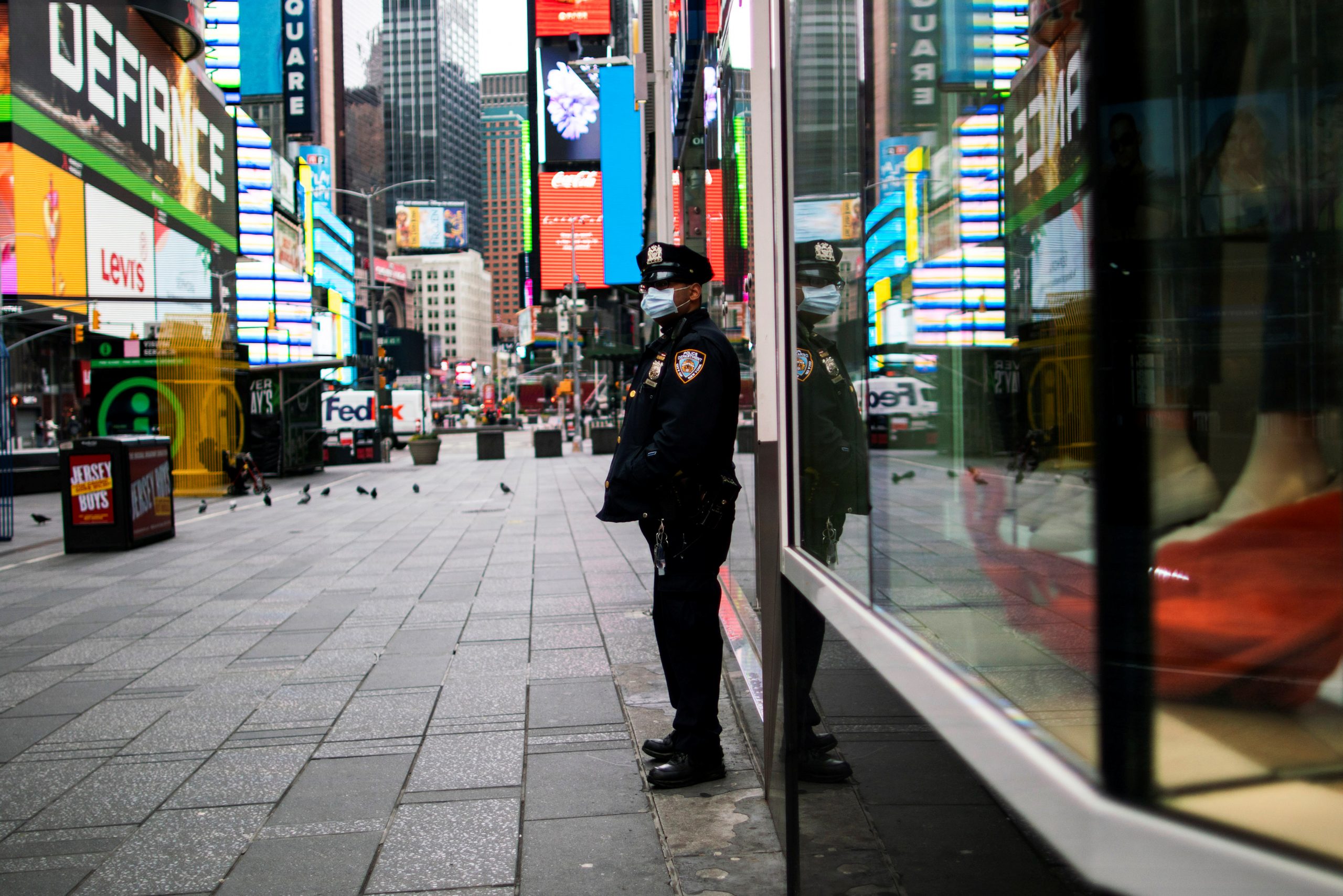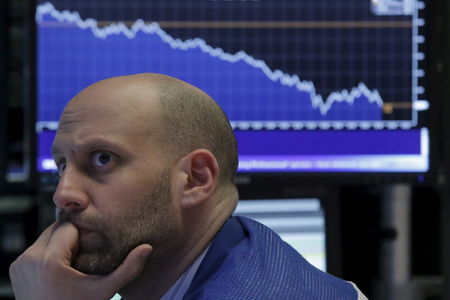Uncategorized
Is everything going back to February 2020?: Morning Brief

I was talking to a high-profile Wall Street strategist the other day who told me she and her husband were house-hunting in the Hamptons.
They saw a place they liked, but the asking price was too high.
“It was as if the downturn in the stock market hadn’t happened,” the strategist related. “I told the broker: ‘I’m paying what this house was worth back in February 2020, because that’s what it’s worth now.’”
A provocative take, and one worth considering.
The strategist is suggesting that a surge in the price of everything from stocks to crypto to real estate was a one-off that came and is now gone. So, too, are the stimulus payments sent to millions of Americans that helped fuel some of this enthusiasm.
Therefore, the argument goes, prices should — and will — revert back to pre-COVID norms.
Let’s follow the strategist’s lead, then, and use February 2020 as a benchmark. Or in the case of stocks, February 19, 2020, when the S&P 500 closed at a pre-pandemic high of 3,386.
As the magnitude of the COVID-19 pandemic became clear, investors sold stocks, and by March 23, 2020, the S&P fell to 2,237, a drop of more than 33% in just over a month.
Since then the market has been on a ride wild enough for Mr. Toad.
Starting from the March 2020 low, the S&P 500 more than doubled to its most recent record close of 4,796 on January 3, 2022. Fueled by $5 trillion in stimulus funding — $1.8 trillion of which went directly to individuals and families — as well as accommodative policy from the Federal Reserve and near-zero interest rates, markets entered a speculative phase that witnessed the rise of meme stocks, SPACs, crypto and NFTs.
“We believe what’s gone on in the market in the first six months of this year, and what will go on for maybe another year to year and a half, is bear market punishment for the ridiculous financial euphoria,” says Bill Smead, founder and chairman of Smead Capital Management.
So far this year, the S&P 500 is down over 18% and investors just endured their worst starting six months to a year since 1970. Of course, the S&P is some 500 points above the February 2020 high. Which means, if our strategist is right, the index still has another 13% to drop.
Following the same framework, crypto investors are feeling the pain, but may still have more to come.
On February 11, 2020, the price of bitcoin (BTC-USD) was $10,326. Today bitcoin trades just below $22,000, standing at $21,872 on Friday afternoon.
The cryptocurrency’s record high is over $67,500, reached in November 2021.
The SPAC market, too, appears to be returning to earth. According to SPACInsider, the number of SPAC IPOs in 2019 was 59, then 248 in 2020, and up to 613 last year. In 2022, just 70 SPAC IPOs have come to market.
“We had this massive SPAC boom,” says SPACInsider founder Kristi Marvin. “It was a confluence of perfect factors that will be hard to replicate – with the Fed injecting that much money into the system and so forth. We’re obviously in a very down market.”
As for venture capital, a number of measures show the business slowing. But one metric that offers an indication of where the industry stands relative to early 2020 is the number of acquisitions of VC-backed companies. In the second quarter of 2022, there were some $15.4 billion of announced or closed deals, according to PitchBook. In the first quarter of 2020, the total was $10.7 billion.
As for valuations of early stage VC companies, the process may take longer to unwind. The average early stage valuation stood at $58 million the first quarter of 2020; today, the average valuation comes in at $168 million for these same businesses. And private markets often don’t require investors to take writedowns like their public market counterparts.
“The stimulus really was impactful,” says Dave Pierce, managing director GPS Capital Markets. “Prices really didn’t jump incrementally at first, but as people have been able to put money into the economy, it has made everything way more expensive.”
And, of course, there are metrics which show that facets of the economy have in fact reverted to B.C. (Before COVID) in a good way.
Nearly 2.5 million people passed through U.S. airport security checkpoints on the Friday of July 4th weekend, the most since, you guessed it, February 2020. The pandemic low in TSA checkpoint throughput was reached on April 13, 2020, when just 87,534 people went through security checkpoints.
And after yesterday’s jobs report showed the creation of 372,000 jobs in June, with the unemployment rate holding steady at 3.6%, the White House crowed that “our private sector has recovered all of the jobs lost during the pandemic, and added jobs on top of that.” And that 3.6% unemployment rate is just a smidge above where it was (3.5%), back in Feb 2020; in April 2020, this topped out at 14.8%.
Even if the process of returning to February 2020 does happen across financial markets, we can’t erase the past 28 months.
Most Americans in a recent survey say their lives are different now and they accept that. COVID is still with us and so are its effects — supply chain snafus, tight labor conditions, and inflation are among them.
And now, perhaps because of all that, some say the economy is slowing. One thing we know for sure is that the stock market has been in meltdown mode. And if the market is a leading indicator, maybe we are going back to — as Barbra Streisand says — the way we were.
The Fed began to eye all this warily last year and in January signaled it was going to take away the punch bowl and raise rates, which is when stocks began to swoon.
But aren’t more people working and flying both positives, which means stock prices shouldn’t or won’t fall more? Good question.
When looking at the day-by-day vicissitudes of the economy, it’s not easy to come to definitive conclusions.
Returning where we started though — luxury vacation homes — it could be our Hampton’s-home-hunting strategist might not hit a bid, at least if stories about houses in Naples, Florida and Nantucket are any measure.
There still appears to be all kinds of money sloshing around looking for a home.
And it seems that sometimes, a $20 million beach house is worth…whatever you pay for it.
—
This article was featured in a Saturday edition of the Morning Brief on July 9, 2022. Get the Morning Brief sent directly to your inbox every Monday to Friday by 6:30 a.m. ET. Subscribe
Follow Andy Serwer, editor-in-chief of Yahoo Finance, on Twitter: @serwer
Click here for the latest stock market news and in-depth analysis, including events that move stocks
Read the latest financial and business news from Yahoo Finance
Download the Yahoo Finance app for Apple or Android
Follow Yahoo Finance on Twitter, Facebook, Instagram, Flipboard, LinkedIn, and YouTube
Uncategorized
BofA Securities maintains Amazon.com at ‘buy’ with a price target of $154.00
Uncategorized
Six people in critical condition, one still missing after Paris blast – prosecutor

5/5
© Reuters. French firefighters and rescue forces work after several buildings on fire following a gas explosion in the fifth arrondissement of Paris, France, June 21, 2023. REUTERS/Gonzalo Fuentes
2/5
PARIS (Reuters) – Six people remained in a critical condition and one person was believed still missing on Thursday, one day after a blast ripped through a street near Paris’ historic Latin Quarter, the city’s public prosecution office said. “These figures may still change,” prosecutor Maylis De Roeck told Reuters in a text message, adding that around 50 people had been injured in the blast, which set buildings ablaze and caused the front of one to collapse onto the street. Of two people initially believed missing, one has been found in hospital and is being taken care of, the prosecutor said, adding: “Searches are ongoing to find the second person.” Authorities have not yet said what caused the explosion, which witnesses said had followed a strong smell of gas at the site. The explosion led to scenes of chaos and destruction in the historic Rue Saint Jacques, which runs from the Notre-Dame de Paris Cathedral to the Sorbonne University, just as people were heading home from work. It also destroyed the facade of a building housing the Paris American Academy design school popular with foreign students. Florence Berthout, mayor of the Paris district where the blast occurred, said 12 students who should have been in the academy’s classrooms at the time had fortunately gone to visit an exhibition with their teacher.
“Otherwise the (death toll) could have been absolutely horrific,” Berthout told BFM TV. She said three children who had been passing by at the time were among the injured, although their lives were not in danger.
Uncategorized
4 big analyst cuts: Alcoa & DigitalOcean shares drop on downgrades

© Reuters.
Here is your Pro Recap of the biggest analyst cuts you may have missed since yesterday: downgrades at Alcoa, DigitalOcean, Teleflex, and Xcel Energy.InvestingPro subscribers got this news in rapid fire. Never be left in the dust again.Alcoa stock drops on Morgan Stanley downgrade Alcoa (NYSE:) shares fell more than 3% pre-market today after Morgan Stanley downgraded the company to Underweight from Equalweight and cut its price target to $33.00 from $43.00, as reported in real time on InvestingPro.The firm sees a significant decline in consensus estimates, and as negative earnings revisions materialize, it believes the stock will face downward pressure and underperform.The analyst’s estimates for EBITDA in Q2, 2023, and 2024 are substantially lower than the consensus. The stock is currently trading above its historical average. The firm said its downward revisions in earnings estimates and price target are attributed to the company’s high operating leverage to aluminum prices.DigitalOcean stock plunges on downgradePiper Sandler downgraded DigitalOcean (NYSE:) to Underweight from Neutral with a price target of $35.00. As a result, shares plunged more than 5% pre-market today.The company reported its last month, with revenue beating the consensus estimate, while EPS coming in worse than expected. Furthermore, the company provided a strong outlook, which was above the Street estimates.2 more downgradesTeleflex (NYSE:) shares fell more than 3% yesterday after Needham downgraded the company to Hold from Buy, noting that UroLift expectations may still be too high.According to Needham, their checks indicate that urologists are reducing their use of UroLift due to its retreatment rates, reimbursement cuts, and increasing use of competing procedures. This is also supported by their Google Trends data analysis, which indicates decreasing search interest in UroLift.BMO Capital downgraded Xcel Energy (NASDAQ:) to Market Perform from Outperform and cut its price target to $64.00 from $69.00 to reflect the lower-than-expected terms of the company’s regulatory settlement in Colorado.Amid whipsaw markets and a slew of critical headlines, seize on the right timing to protect your profits: Always be the first to know with InvestingPro.Start your free 7-day trial now.

 Forex3 years ago
Forex3 years agoForex Today: the dollar is gaining strength amid gloomy sentiment at the start of the Fed’s week

 Forex3 years ago
Forex3 years agoUnbiased review of Pocket Option broker

 Forex3 years ago
Forex3 years agoDollar to pound sterling exchange rate today: Pound plummeted to its lowest since 1985

 Forex3 years ago
Forex3 years agoHow is the Australian dollar doing today?

 Cryptocurrency3 years ago
Cryptocurrency3 years agoWhat happened in the crypto market – current events today

 World3 years ago
World3 years agoWhy are modern video games an art form?

 Commodities3 years ago
Commodities3 years agoCopper continues to fall in price on expectations of lower demand in China

 Economy3 years ago
Economy3 years agoCrude oil tankers double in price due to EU anti-Russian sanctions






















